-
What is Africa’s most elusive bird species ? By Dr.Chris Lotz
When asked the question “what is Africa’s most elusive bird species”, most birders would answer that it must be any of the flufftails, which are, of course, notorious. Or, perhaps they might answer that it could be one of the two pitta species lurking on this continent. But, given a systematic approach, it is actually quite possible to find and even photograph every single flufftail species given a few weeks of travel across Africa and Madagascar. Even the Critically Endangered Slender-billed Flufftail can be reliably seen with a bit of effort – As for the pittas, they certainly aren’t in any way easy, but we usually do find both species annually – our success rate for African Pitta in Mozambique and Green-breasted Pitta in Uganda must be about four in five attempts. At the start of the breeding season, we have exact stakeouts for these jewel-like species and so we’ve kind of “mastered” them and they no longer escape us.
Fewer birders would guess that the bird that we simply can’t find is a splendidly-colored finch occurring at extremely low densities in a tiny part of central Africa.

Shelley’s crimsonwing. Photo courtesy http://www.gorilla.org
While local birding guides in Uganda report the species every couple of years, there are only three known photos of the bird in the world. ( All are held in the hands of a field researcher and all are cock birds. There are currently no known photo references of a hen bird ) And we have never found one on any of our tours yet (despite the fact that we do marvelously well on all the other rare and localized species in the region). The finch we are talking about is the Shelley’s Crimsonwing (Cryptospiza shelleyi), an Albertine Rift Valley endemic with a total world population estimated at anything between 2500 and 10000 individuals.
The Albertine Rift is a westward branch of the famous Great Rift Valley, and it boasts a large number of endemic bird species occurring only in a tiny part of Africa where four countries meet: Uganda, Rwanda, Burundi and the Democratic Republic of the Congo (DRC).
The beautiful and spectacularly bio-diverse, forested mountains of the Albertine Rift straddle the border regions of these four countries. Shelley’s Crimsonwing is one of these Albertine Rift endemics skulking in the undergrowth of the mountain forests here. The DRC is a dangerous place to visit, and most birders focus on either Rwanda or Uganda when they want to find this rare finch. (But find the bird they don’t…!)
Classified as Vulnerable by Birdlife International, Shelley’s Crimsonwing is so poorly-known that scientists do not even have much of an understanding why it is so rare, and why it is apparently declining (also with very fluctuating numbers from year to year). The guess is that habitat destruction by humans is the main culprit, but it has also often been said that the species might be declining due to natural causes, albeit mysterious and puzzling ones!
Where to look for it:
- We wish we knew!
- However, it is known (among other places) from the following legendary birding forests (all of which are also famous for mountain gorilla trekking
-
-

Threatened Mountain Gorilla ( Gorilla beringei.beringei ) photo taken by Cheryl Mares and kindly donated to the RFCG
Nyungwe Forest in Rwanda
- The Mgahinga Gorilla Reserve straddling the border between Uganda, Rwanda and the DRC – this is often considered a top site within Uganda for the crimsonwing, but the reserve is often inexplicably ignored by many birding tour operators. But, we do visit this site annually, partly because it is one of the most accessible sites for the incomparable Rwenzori Turaco (which we reliably DO find, unlike the crimsonwing!). With the spectacular Virunga Volcanos as a backdrop, Mgahinga is certainly not an unpleasant place to spend a couple of days…!
-
- Bwindi Impenetrable Forest in Uganda – this is where several sightings over the last few years have been, including a nesting pair that gave a good number of birders a look (practically “twitchable”) – but one also has to understand the story might have been exaggerated like a fishing tale (no photos were taken!). The long walk down to Mubwindi Swamp at the Ruhizha section of Bwindi – compulsory for seeing another of Africa’s most desirable birds, African Green Broadbill – is probably best. The good news about Bwindi is there are no less than 43 finch species that can be seen in this tropical rain forest.
Why not join us in August 2016 to help look for Africa’s most elusive finch ? Only a few places left.
Day 1: Aug 22. Arrival at Kigali in Rwanda and drive to Kisoro in Uganda stay at Travelers Rest X4 nights.
Day 2: Aug 23 Birding Mgahinga.
Birding Mgahinga Gorilla Reserve. This is one of the classic sites for Shelley’s Crimsonwing but even though we’re spending three full days here and two full days at its other classic site, we guess that the chances of actually finding Shelley’s is perhaps one in four. Hopefully the spectacular Rwenzori Turaco and the great scenery (ancient volcanos) will entertain us regardless. And, with lots of luck, who knows we might even encounter gorillas which freely cross the nearby borders into the DRC and Rwanda as this reserve straddles three countries! Please note that the main aim of this expedition is to try and find and photograph Shelley’s Crimsonwing so we’ll very much spend the bulk of our time looking for this mega-elusive species – this means driving to the reserve each morning and walking a lot, sometimes uphill quite a lot (at both sites, Mgahinga and also Bwindi).
Day 3: Aug 24 Birding Mgahinga
Day 4: Aug 25 Birding Mgahinga
Day 5: Aug 26 Birding to Ruhija.
Ruhija in the famed Bwindi Impenetrable Forest boasts over 20 Albertine Rift endemics including African Green Broadbill – and of course good old Shelley’s. If we don’t find Shelley’s, there are three other crimsonwings in this forest. It’s also one of the world’s best-known sites for Mountain Gorilla, but if you want to see that then we suggest you join the Aug 1-19 birding and primate trip – as the current trip is a “hardcore” Shelley’s trip.
Overnight at Trekkers Tavern. Ruhija. Bwindi
Day 6: Aug 27 Birding in Ruhija. Overnight at Trekkers Tavern
Day 7: Aug 28 Birding in Ruhija.Overnight at Trekkers Tavern
Day 8: Aug 29 Transfer to Kigali and departure.
The cost is based on basic clean accommodation and meals, land cruiser vehicle with driver and fuel, guide fees, park entrance fees and drinking water in the car.
The land cruiser upon which the prices are based is the typical East African one with a popup roof, but not the newest one – and without air conditioning. This is the norm in Uganda. A surcharge would be payable for a truly good vehicle.
US$3738 per person sharing for a group of 4-5 paying participants, or $3230 for 6. There will be a small single supplement for those preferring a single room or if we can’t find someone to share a room with you. A separate price can be quoted if a Gorilla trek needs to be included.
This price includes a 10 % conservation donation to the Rare Finch Conservation Group which is a registered non-profit organisation.
We would like to try and get photos and sound recordings of the Shelley’s finch, one of Africa’s rarest finches. We plan to be as close as possible to the sites we feel are best for the species. We’d like to try and get publicity for this rare species (which will hopefully help its conservation). The trip will naturally also look at other bird and finch species in the area, but our main focus will be to try and find and see the threatened and elusive Shelley’s.
Take advantage of one of two great Africa EcoTour options linked to the Shelley’s Expedition
Join a birding and primate tour of Uganda from 1 -19 August before the Shelley’s Expedition starts, and / or join a Namibia, Botswana, Vic Falls tour after it. ( Maximum 8 per group ) Details of both trips are at ihttp://birdingecotours.com/tour/birding-tour-uganda-gorillas-and-chimpanzees-in-12-days-2015-2?type=country&where=Uganda and / or http://birdingecotours.com/tour/birding-tour-namibia-okavango-and-victoria-falls-18-day-2016. please note that while the latter trip is usually run later in the year, if we get at least four participants, we will add another departure of this trip from Sep 1-18, 2016.
Please e-mail info@birdingecotours.co.za for more details on the Shelley’s Expedition and the exciting two Birding Ecotour options to experience and enjoy Africa at its very best

Founded in 2005 The Rare Finch Conservation Group is registered in South Africa as a non-profit organisation. It is totally dependent on donors and sponsors to carry out its conservation work on finches. All donations will be publicly acknowledged , unless otherwise requested, on the RFCG website. Donations can be made to the following account. Rare Finch Conservation Group, Nedbank. Account number 1933 198885 Branch : Sandown 193 305 South Africa ( For international donors please add ) SWIFT NEDSZAJJ.SEE – CONSERVE – ENJOY






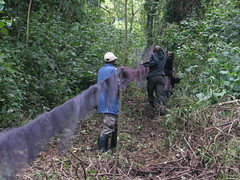


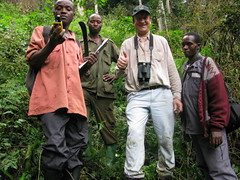

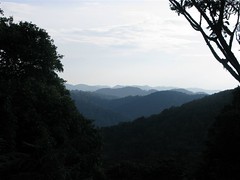
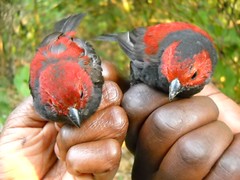
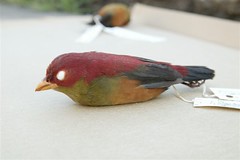
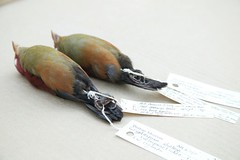
Leave a comment